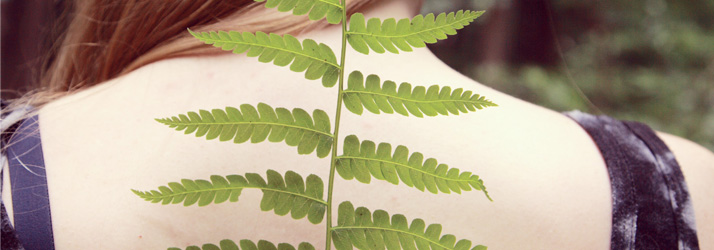Chiropractic and Scoliosis: A Non-Invasive, Natural Approach in PEACHTREE CORNERS GA

Scoliosis is a disease of the spine in which the spine curves severely to the left or the right. This curve can be as “minor” as inhibiting the nervous system flow in that section of the spine to as “major” as requiring surgery. In severe cases of scoliosis, the curve can cause impingement on breathing and limit a person from being able to take a deep breath. Scoliosis affects roughly 1-5% of the population in the United States. It is commonly diagnosed in young teenagers when they begin a growth spurt during puberty. (1)
Side-effects of scoliosis, in adults or adolescents, are commonly noted as neck or back pain, difficulty breathing, issues with balance, headaches, leg pain, and pain that can travel into the arms and legs. Young men in high school, playing sports, may be affected more severely in some situations because they use and abuse their body. Sports push us to use more of our muscles and range of motion, a person affected by scoliosis may notice their symptoms more so in an athletic situation. This example of a young man in football, may notice he plays the sport with fewer distractions from pain, after receiving a chiropractic evaluation and adjustment. (2,4,5)
Diagnosing Scoliosis
A chiropractor is qualified to diagnose scoliosis in adults as well as in children. It can be diagnosed through orthopedic exams as well as on an X-Ray exam. Children in school may have been asked to “put their hands together, lean over and touch your toes”, similar to a dive into a swimming pool. The practitioner uses this exercise to determine if an obvious lateral curve is beginning to develop in a young adult. Young adults diagnosed with scoliosis may benefit from chiropractic, as well as chiropractic bracing technology. In severe circumstances, the patient may be required to undergo surgery in which rods, called “Harrington Rods”, are surgically screwed into the vertebra in the spine. This is just one method used by surgeons to correct a scoliotic curve. (2)
Making the Change
Chiropractors help work against scoliosis by evaluating the nervous system and pushing the internal environment towards a more balanced state. A balanced nervous system allows the body to correct itself and facilitate healing. Chiropractors can also help relieve the symptoms of scoliosis, such as back pain or tingling in the hands. Scoliosis can cause muscles to be very tense on one side of the back, more so on the other. This creates a see-saw situation, in which inflamed, tense muscles increase the stress on one side of the body, while the opposite side is left weak and limp. (3)
Idiopathic scoliosis, which is the type typically diagnosed in young adults, has no known cause. Chiropractic treatment, in some instances, has not only been shown to provide the patient with pain relief but also decreased the lateral curve of the patient. In other words, the severity of the disease was decreased, and the progression of the disease was halted. (3,4,5) Reducing the curve and decreasing the symptoms can lower the chance a patient will one day require invasive surgery.
Our Approach
In our clinic, we utilize a technique called “Torque Release Technique”. We have found in our children affected by scoliosis, we achieve strong, satisfying, and lasting results using this technique. It is very gentle, safe to use on the youngest little babies or on the oldest, most frail individuals. We evaluate our patients on a case-by-case basis to see which technique will benefit them the most.
Author: Aaron Strickland
Aaron is a current DC student at Life University. He has completed his certification in Applied Kinesiology. He hopes to graduate in the Fall of 2024.
Sources
- (1)Thomas JJ, Stans AA, Milbrandt TA, Kremers HM, Shaughnessy WJ, Larson AN. Trends in Incidence of Adolescent Idiopathic Scoliosis: A Modern US Population-based Study. J Pediatr Orthop. 2021 Jul 1;41(6):327-332. doi: 10.1097/BPO.0000000000001808. PMID: 34096545; PMCID: PMC8542350.
- (2)Janicki JA, Alman B. Scoliosis: Review of diagnosis and treatment. Paediatr Child Health. 2007 Nov;12(9):771-6. doi: 10.1093/pch/12.9.771. PMID: 19030463; PMCID: PMC2532872.
- (3)Thornhill JT. A Vitalism Ethos and the Chiropractic Health Care Paradigm. J Chiropr Humanit. 2020 Dec 7;27:59-81. doi: 10.1016/j.echu.2020.10.004. PMID: 33324135; PMCID: PMC7729115.
- (4)Morningstar MW, Stitzel CJ, Siddiqui A, Dovorany B. Chiropractic Treatments for Idiopathic Scoliosis: A Narrative Review Based on SOSORT Outcome Criteria. J Chiropr Med. 2017 Mar;16(1):64-71. doi: 10.1016/j.jcm.2016.10.004. Epub 2016 Dec 13. PMID: 28228699; PMCID: PMC5310951.
- (5)Morningstar MW. Outcomes for adult scoliosis patients receiving chiropractic rehabilitation: a 24-month retrospective analysis. J Chiropr Med. 2011 Sep;10(3):179-84. doi: 10.1016/j.jcm.2011.01.006. Epub 2011 Aug 6. PMID: 22014907; PMCID: PMC3259989.
OFFICE HOURS
Monday
10:00am - 12:00pm
3:00pm - 6:30pm
Tuesday
3:00pm - 6:30pm
Wednesday
10:00am - 1:00pm
Thursday
10:00am - 12:00pm
3:00pm - 6:30pm
Fri, Sat, Sun
Closed
*LATEST APPOINTMENT TIME IS 6:30PM
WALK-INS WELCOME
Phoenix Chiropractic
3200 Pointe Pkwy NW STE 300
Peachtree Corners, GA 30092
(770) 744-5810




